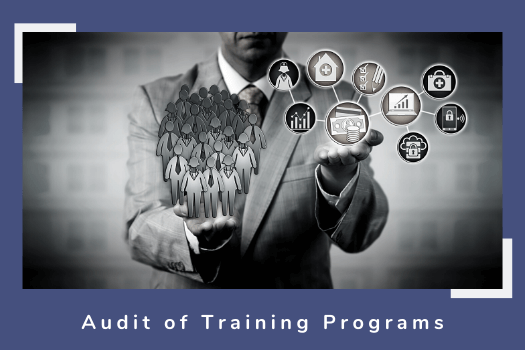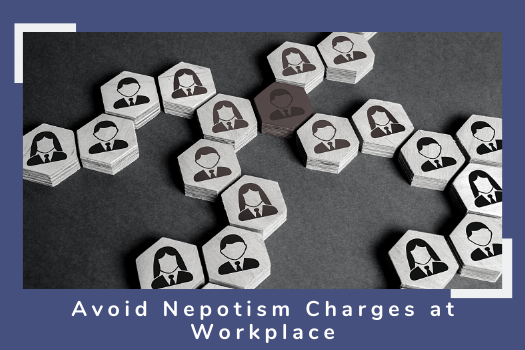Why Organizations Must Audit Their Training Programs?
Employee Engagement, Employee Relations, Rewards and Recognition
Having an employee training program just for the sake of having one won't do any good to the organization. If an organization is truly looking forward to drawing the best possible takeaways from an employee training program, it must ensure that the program is relevant for their organization. It should be well and truly in line with the objectives of the organization.
An organization in order to ensure that the current learning methodologies that are in force are still relevant must conduct regular reviews of their training programs. To keep pace with the most advanced training programs out there in practice, an organization must make good use of auditing.
Regular audit of training programs is of great help when it comes to the detection of unusable, irrelevant, or outdated training techniques that are no longer serving the intended purpose. The reason for such deviation may be anything, lack of proper updating and maintenance or obsolescence. Once the obsolete training programs are circled out, they can be easily replaced with sound and efficient techniques.
Factors which advocate the need for an audit of training programs.
Meeting industry standards compliance:
Certain industries face considerable changes in their regulatory and industry norms which are to be complied with. Regular audits will present before you the compliance requirements that need to be updated or added in the current compliance procedure of the organization.
Get to know about Learners’ Preferences:
All the learning programs are designed to keep the employees in focus. The organizations are always interested to know which training programs are preferred by the employees and which are not.
An audit will depict the type of programs towards which the inclination of employees is significantly greater, and those programs that aren't gaining the desired attention.
Whether any critical element is missing from the training program:
One can never rule out the possibility that the training program of a certain organization lacks a key component that otherwise could have contributed massively to the L&D goals and initiatives. There is no way, but an audit to find out about such a missing element in the training module.
The training program must be aligned with your organization's goals:
A training module that once catered to the organization fully might not be appropriate any more with the changes in the long-term vision and goals of the organization. If it is discovered as a result of the audit that several training modules are rendering poor performance results consistently over the recent past, then such modules need to be revamped or removed.
For example, an organization has withdrawn from the field marketing, in such cases, the training module related to marketing must be removed from the program.
Questions that need to be answered through the audit of learning programs
Before getting started with the audit procedures, one must know what are the points that are to be looked for in the audit. The following are the questions that need to be answered through the audit.
Are the training modules consuming too much of the employee work time? Because if this is the case and moreover there aren't any encouraging takeaways from the training program then such training programs need to be altered or revamped. The training program must be such which doesn't keep the employee away from working for too long.
Are there chances of information overload? The fabrication of the learning process must be done in such a way that each worker is given only the requisite learning which he/she needs for efficient delivery of their duties. Irrelevant information is of no use, you cannot make each employee learn each aspect. As there is a certain receptive capacity of each employee.
Do we have any learning assets which are criticized by the learners? The learning programs are meant for the employees and hence the preferences of the employees are to be kept at the top. There might be the possibility that the content of the training program is no longer relevant. If there is any learning module that is criticized by the employees, then it should be removed once the organization is satisfied with the reason behind such criticism. An audit must be directed towards finding the reason for the same.
How to get Enroute to conduct an audit?
Once we are done with understanding the need to conduct an audit, the big question that arises is how to conduct an audit. Following is the procedural flow of steps to conduct an audit.
Prepare the catalog of all the training programs:
Prior commencing with the audit procedures prepare an exhaustive list of all the training programs that are in force in the organization. A master file will ensure that no component is overlooked while auditing.
Look into learners’ preferences and feedback:
There will be some programs that are preferred by the learners and they choose those programs in numbers. Try to find out why it is so. Enquire the reasons for the sidelining of certain programs by the learners and if the reason for such negligence is the obsolescence of the program then the audit report must clearly specify to remove such program.
Analyze the learner's data to find out the mode of taking the learning program preferred by them, it may be online through mobile apps or the conventional offline mode. Finally, analyze trusted user feedback to find out about the efficiency of the learning programs. You can even conduct your own polls for attracting user feedback.
Employee performance evaluation:
This is more like a ground reality check of the training programs. This involves the collection of the employee performance data before the conduct of the learning programs and a comparison of such collected data with the results achieved after the employees are subjected to training programs.
If there is a considerable hike in the performance post the implementation of the learning programs, then these are positive signs. This means that the program is implemented properly and is producing the desired results. If the improvement in the performance is insignificant or there is no improvement at all, then concrete actions are required to be taken regarding the revamping of the learning programs.
Look for the scope for improvement:
There's always room for betterment, the audit process must be conducted in such a way to highlight the areas where improvement can be achieved. Such improvement can be a result of the implementation of the latest technologies and strategies.
The employee's data along with the feedback could be resorted to finding out the areas where the training programs are lacking.
For instance, the feedback from the employees suggests that the organization must extend the learning facility through mobile apps. In such cases, the organization must look to provide eLearning facilities to the learners.
An audit asks for a great amount of work, constantly supported by the money and other resources of the organization. This might create a doubt that is it worth having an audit? The obvious answer is 'yes'. No doubt the audit procedure is expensive and time-consuming but when conducted gracefully it is bound to eliminate the discrepancies in the learning programs and long-term impact can be realized in terms of increased ROI of the organization.






